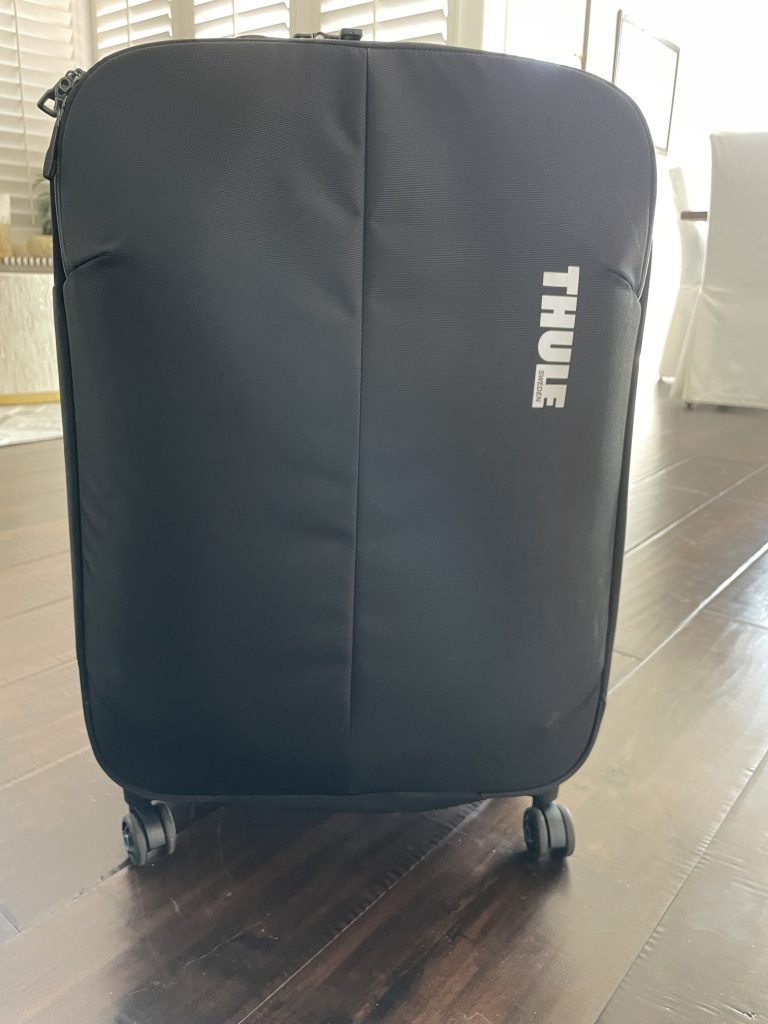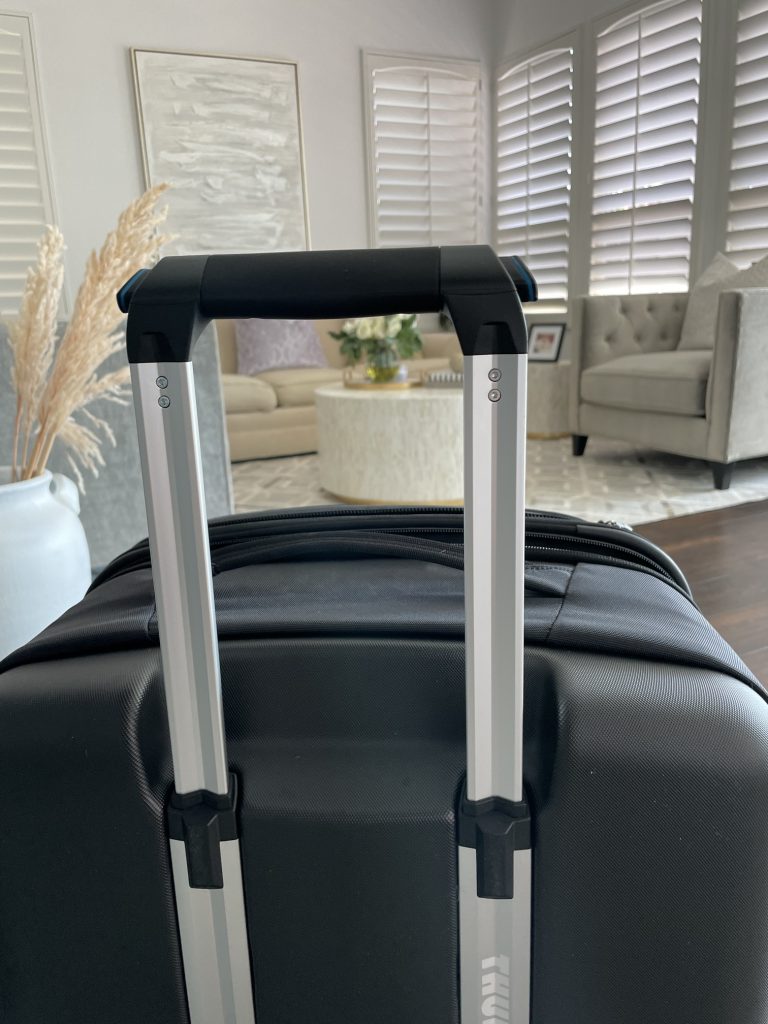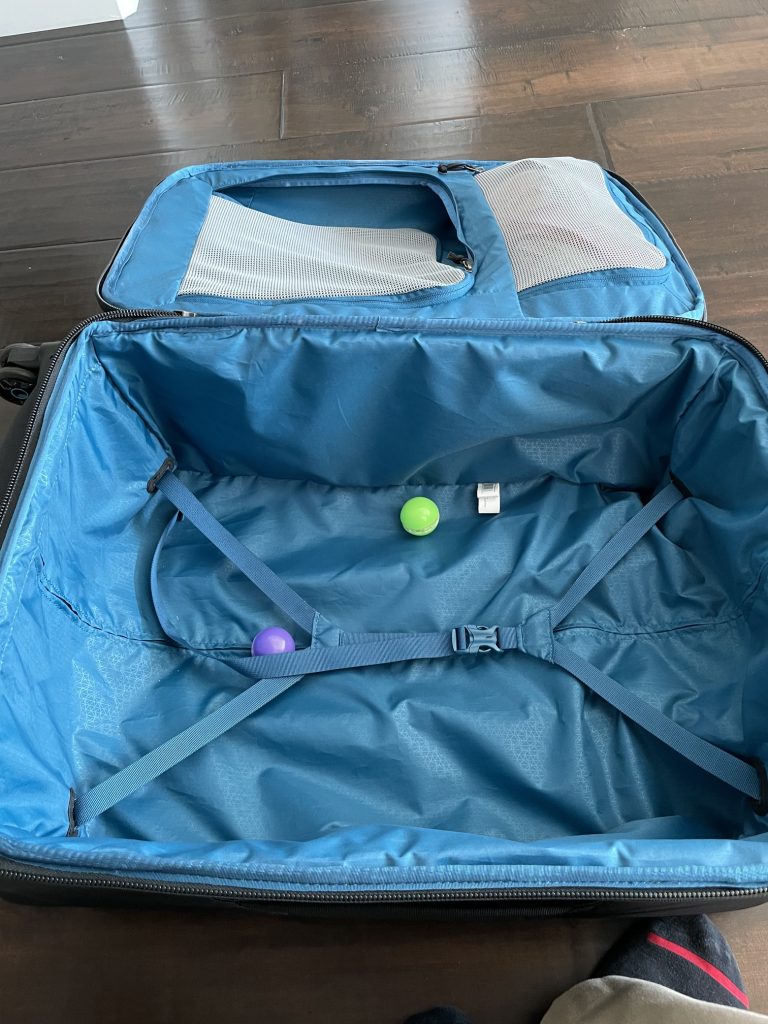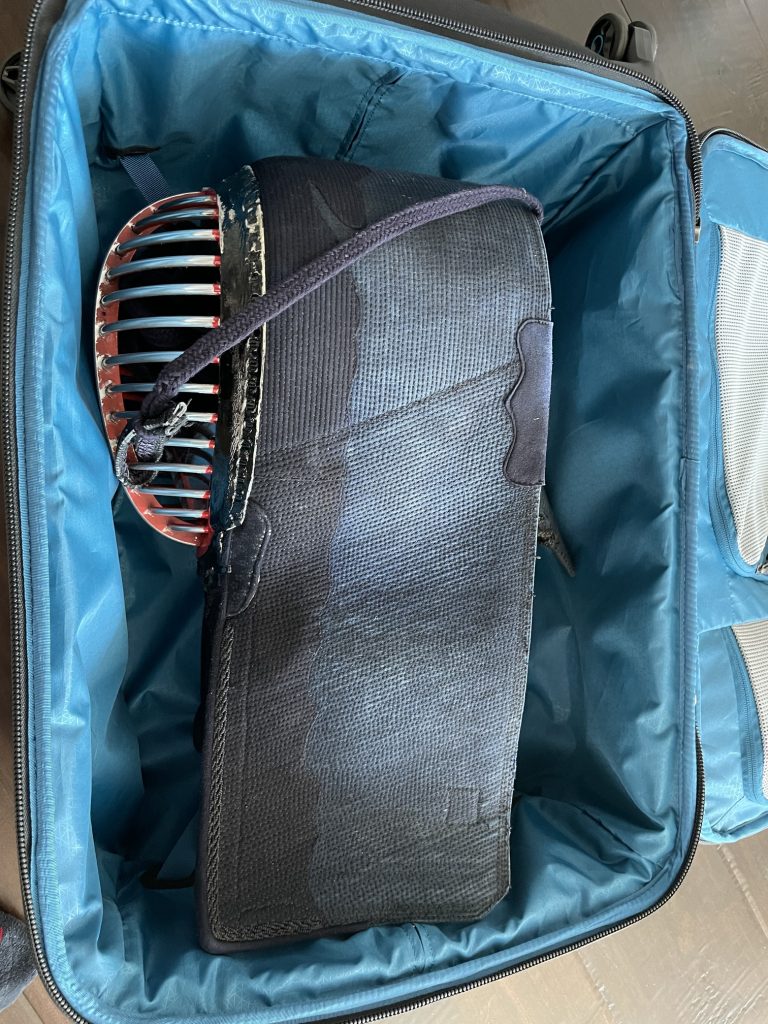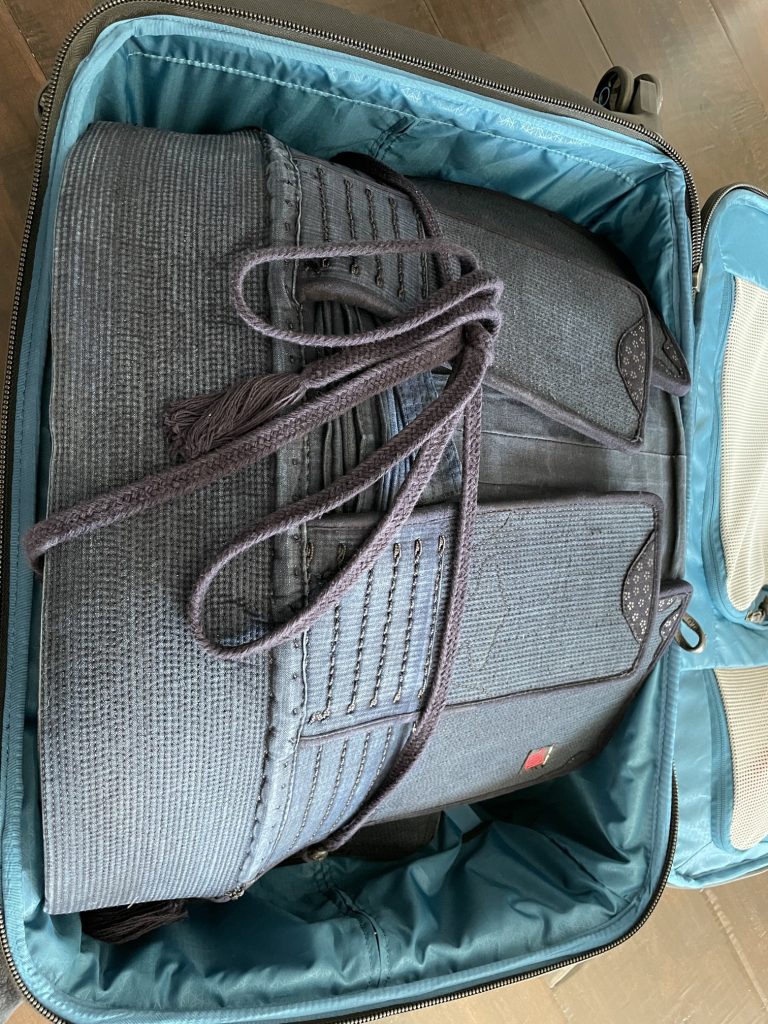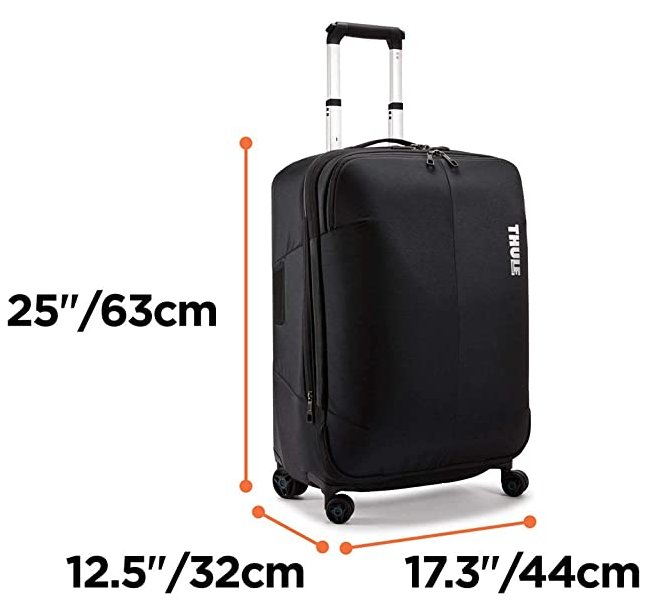So I finally got tired of fixing my last non-kendo bogu bag (see http://www.iheartkendo.com/fixing-a-zipper/), and after a few months of searching I purchased this bad boy from Thule.
The Thule Subterra 25 inch/63 cm Spinner combines a soft front and reinforced sides and a textured skid plate in a stable vertical platform. It has an extendable handle on the rear of the bag and has two locking positions. While most handles have a release button on the top, the Subterra has two buttons on the side to prevent accidental release. You can press either button to release the handles. Two reinforced ballistic nylon handles on the top and on one side of the bag opposite the zippered opening. All zippers have reinforced eyelets. The front wheels are smaller so that they do not encroach on the internal cargo space. There is a mesh pocket for a business card to be used as ID. Comes in black, blue and burgundy.
The svelte Subterra has outer dimensions of 12.5 x 17.3 x 25.0 inches (31.75 x 43.9 x 63.5 cm) and is quite compact compared to my last bag, Planet Eclipse GX Split ‘Compact’ gear bag which was quite bulky (35 x 40 x 65 cm). I don’t know anything about capacity but the Subterra is 63L and the Split was 91L. The Subterra can also expand two inches via zipper extension. The main compartment can fit my XL E-bogu do and men (10.5 x 16.5 x 19 inches, self measured). I put the hakama and gi in the bottom zippered compartment and the tenugui and other stuff (contacts, tools, first aid kit, tasuki, probably shinpanki too) in the top compartment which can be accessed from the inside of the bag and also from the top of the bag.
It’s pretty light since it’s not a hardside and should be easy to wipe down both inside and out.
The bag is pretty stable upright and I have not had it tip over yet.
When full, there is a little bit of resistance on one side of the zipper which you have to be a little patient to close the bag. I might put a little candle wax or chapstix on it so that it will be easier to pull.
Right now, I haven’t really figured out if I am going to put wet gi/hakama back in the bag or carry a separate drawstring bag.
At 399.95 (430 USD with tax) it’s a bit pricey but I’ve been told the kendo traveller bags from tozando are about $300 (after shipping) but are a bit heavier.
It does the job while looking great. There isn’t any really extra wasted space. But I wished it came with a few more pockets and maybe a velcro panel or two for my patches.
Some other bags I had considered:
Virtue High Roller v4 – too small (15 x 16 x 31 in; 38 x 40.6 x 78.7 cm)
Ruthless Pro Duffle Backpack – too small (12 x 12 x 25 in; 30.5 x 30.5 x 63.5 cm), not rolling
Dakine 365 Roller 75L bag – too small (11.5 x 14 x 28 in; 29 x 35 x 71 cm)
Northface Rolling Thunder 30” Roller – (13 x 16 x 30 in; 33 x 40 x 76 cm) not a spinner
